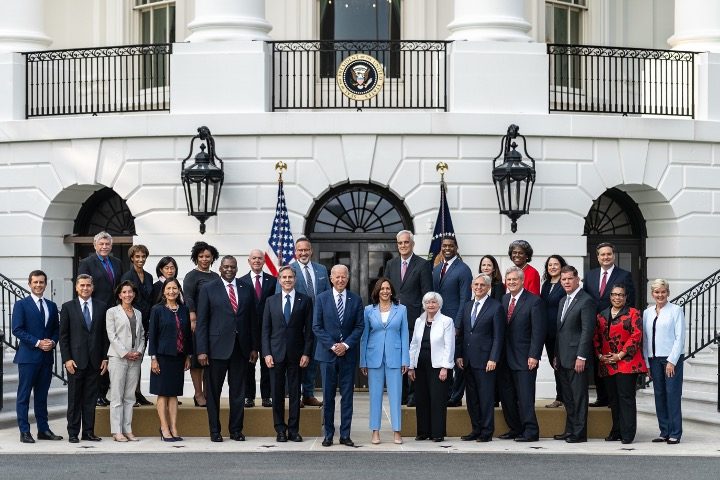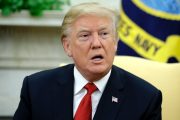
Take out your copy of the United States Constitution. Better yet, pull up a copy online so you can search for a specific word. Now, search for the word “cabinet.” Spoiler alert: You won’t find the word “cabinet” in the Constitution.
Why, then, does the president have a Cabinet, and where did it come from?
These questions are critical considering the power of the president’s Cabinet and that the Presidential Succession Act of 1947 placed each member of the Cabinet in line to take over the executive branch.
Now, I would encourage you all to read the history of that statute, but for now, suffice it to point out that a member of the Cabinet could become president, none of the Cabinet officers is elected by the people, and the Cabinet is not created in the Constitution.
The next to the last week of the convention in Philadelphia was a busy one, as had been all those that came before it. The powers of the president, the office of the vice president and his powers, the authority of treaties, and the oaths of office that would be required of federal officers were all hammered out during this penultimate week of work for the delegates gathered in the Pennsylvania State House in 1787.
The Special Committee added an additional power to the list already approved by the convention, and during the week of September 9 that newly proposed power was put before the entire body for debate and vote. The addition proposed that the president:
may require the opinion in writing of the principal officer in each of the Executive Departments, upon any subject relating to the duties of their respective offices.
It is from this clause that the institution known as the president’s Cabinet has developed, though the Constitution itself makes no provision for such an institution or for those gatherings known as Cabinet meetings. In fact, the word “cabinet” was never used by anyone in the debates at the convention. It wasn’t until a pamphlet written by Charles Pinckney in October 1787 that the word was used by someone in connection with this clause. In his “Observations on the Plan of Government,” Pinckney wrote: “By this means, our Government will possess, what it has always wanted [meaning ‘lacked’], but never yet had, a Cabinet Council.”
It’s illuminating to read the record of the statements made at the State House on September 7 with regard to the clause mentioning “principal officer[s] … of the Executive Departments.”
The clause was brought up for consideration by George Mason, who suggested it be replaced with the following:
That it be an instruction to the Committee of the States to prepare a clause or clauses for establishing an Executive Council, as a Council of State for the President of the United States; to consist of six members, two of which from the Eastern, two from the Middle, and two from the Southern States; with a rotation and duration of office similar to those of the Senate; such council to be appointed by the legislature or by the Senate.
Doctor Benjamin Franklin immediately seconded Mason’s motion. As recorded by James Madison in his Notes of Debates in the Federal Convention of 1787:
We seemed, he said, too much to fear cabals in appointments by a number, and to have too much confidence in those of single persons. Experience showed that caprice, the intrigues of favorites and mistresses, were nevertheless the means most prevalent in monarchies. Among instances of abuse in such modes of appointment, he mentioned the many bad Governors appointed in Great Britain for the colonies. He thought a Council would not only be a check on a bad President, but be a relief to a good one.
Madison wrote that George Mason added that, “In rejecting a council to the President, we were about to try an experiment on which the most despotic government had never ventured. The Grand Seignior himself had his Divan.”
This is a much more formally organized body than the one proposed or the one that currently exists. Mason was a man who recognized the tendency of all governments to become tyrannical and for all men endowed with power to abuse that power unless checked. In this case, the man endowed with power was the president, and the way to check that power was, in Mason’s words, an Executive Council.
Benjamin Franklin’s recitation of the record of history echoed Colonel Mason’s warnings. Pay particular attention to Franklin’s last sentence: Not only would an executive council keep a bad president in check, but it would be a blessing to a good president.
Is that the role played by the president’s Cabinet today? There is a rich history of members of the president’s Cabinet leaving the West Wing and writing tell-all books about how incompetent and/or indecent the president was, but there’s very little of that during their active advisory service to him.
Ultimately, the convention rejected Mason’s motion by a vote of 8-3, and accepted the clause as proposed by the Special Committee by a vote of 10-1.
Although their language was rejected, the lesson is to remember the principles put forth by George Mason and Benjamin Franklin regarding the role the president’s Cabinet was intended to play. While there is no clause of the Constitution explicitly creating the Cabinet, it is clear that such a body was anticipated by the Founders to form a part of the federal government. The function of that body was equally clearly communicated by the members of the Convention of 1787.
It should be the intent of the people of the United States, those who know the history of the president’s Cabinet and its intended function, to remind their federal senators — who are called upon to confirm or reject the members of the Cabinet — of that function, and that we will hold them accountable for actions in confirming those nominees willing and able to check a bad president and bless a good one.



